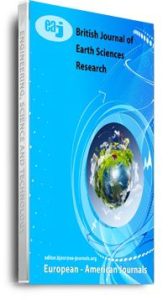Faults are critical to the accumulation of hydrocarbon and manifest themselves asabrupt, gradual or gentle changes of seismic amplitude. However reliable hydrocarbon entrapment in the presence of numerous subtlesub-parallel faults and their identification with computer–based algorithm is a major challenge.Fault detection technologies have proven to be important tools for seismic interpretation. Traditionally, edge detection techniques such as coherency algorithms, derivative methods, semblance,etcin time domain are employed in evaluating faulted hydrocarbon prospects by examining trace to trace similarity in data. These are inherently noisy. In frequency domain,spectral decomposition, requiring the use of a time window e.g. Fourier transform (FT),Hilbert transform(HT),Maximum entropy(ME),etc are used to unmask subtle events. However, these have high sensitivity to noise, weak frequency resolution arising from applied windows, and computational truncation, and are therefore unreliable. This has led to the need for improved techniques. We present the results of the application of amplitude-derived Semblance and Cepstral decomposition to model and 3D field data from the Niger Delta. The Semblance measures localized similarity while the Cepstrum is the Fourier transform of the log of the spectrum of the data and transforms the data from frequency to Quefrency domain. The attributes provide new improved information on the seal risk of hydrocarbon prospect. Our algorithm is based on fast Fourier transform convolution techniques. It was developed from basics and outside oil-industry interpretational platforms using standard processing routine such as Matlab,Gnuplot, Surfer. The results of the algorithm, when implemented on both oil-industry IHS Kingdom Advanced and general platforms were comparable and convincing. The Cepstral decomposition of the thin bed reservoir revealed subtle sub-parallel faults and provided an enhanced level of evaluating the seal risk on prospect. This will facilitate improved reservoir production and performance.
Keywords: Cepstrum, Depobelt, Fourier transform, Homomorphic, Maximum Entropy, Semblance

